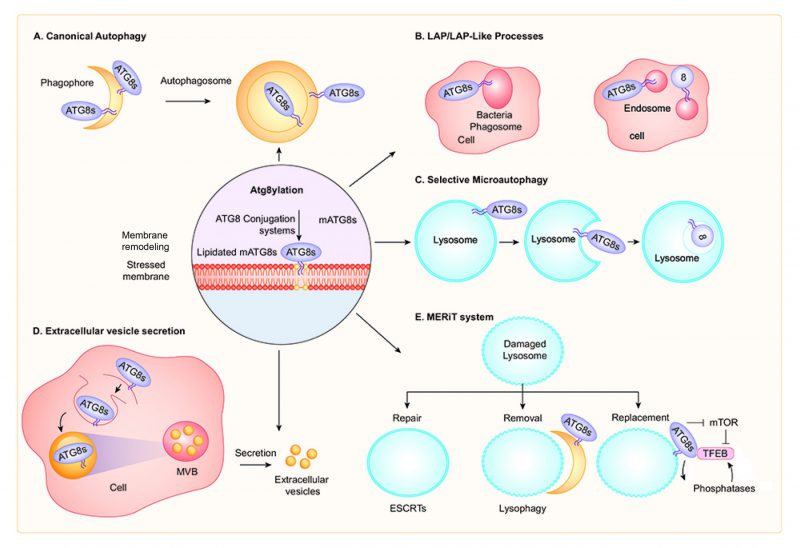Back to article: Atg8ylation as a general membrane stress and remodeling response
FIGURE 3: Different forms and roles of Atg8ylation. (A) Canonical autophagy. Note double membranes, as phagophores close around the autophagic cargo, and presence of lipidated mAtg8s on the outside and inside of the double membrane autophagosome, however, always on the originally cytofacial leaflet. This is the well-established macroautophagy pathway. (B) LAP and LAP-like processes (Lapoid) occurs on phagosomes and endosomes whose cytofacial leaflet of (single membrane) delimiting the organelles is Atg8ylated upon ecountering physical stress signals. (C) Selective microautophagy occurs via an MVB generation-like process whereby lysosomal delimiting membrane that is Atg8ylated invaginates and reduces the surface, size, and contents of the lysosomes. (D) Extracellular vesicle secretion is a subset of secretory autophagy, and in principle represents similar topological changes (albeit differing in details and regulatory processes involved) as in selective microautophagy, except that the cargo sequestered into the MVB-like bodies is secreted upon exocytosis instead of being degraded. Note that EV secretion is a component of a broader collection of secretory autophagy modalities (not shown). (E) MERiT system involves a coordinated response to lysosomal damage, with ESCRTs conducting the repair of mildly damaged lysosomes, autophagy (‘lysophagy') removing extensively damaged lysosomes, and TFEB initiating a lysosomal replenishment program. Note that Atg8ylation thus far has been demonstrated to play a role in the lysophagy and TFEB-dependent steps. See details in the text for each type of Atg8ylation's manifestations including mechanisms and physiological roles. All events are intracellular, even when cells are not depicted.

